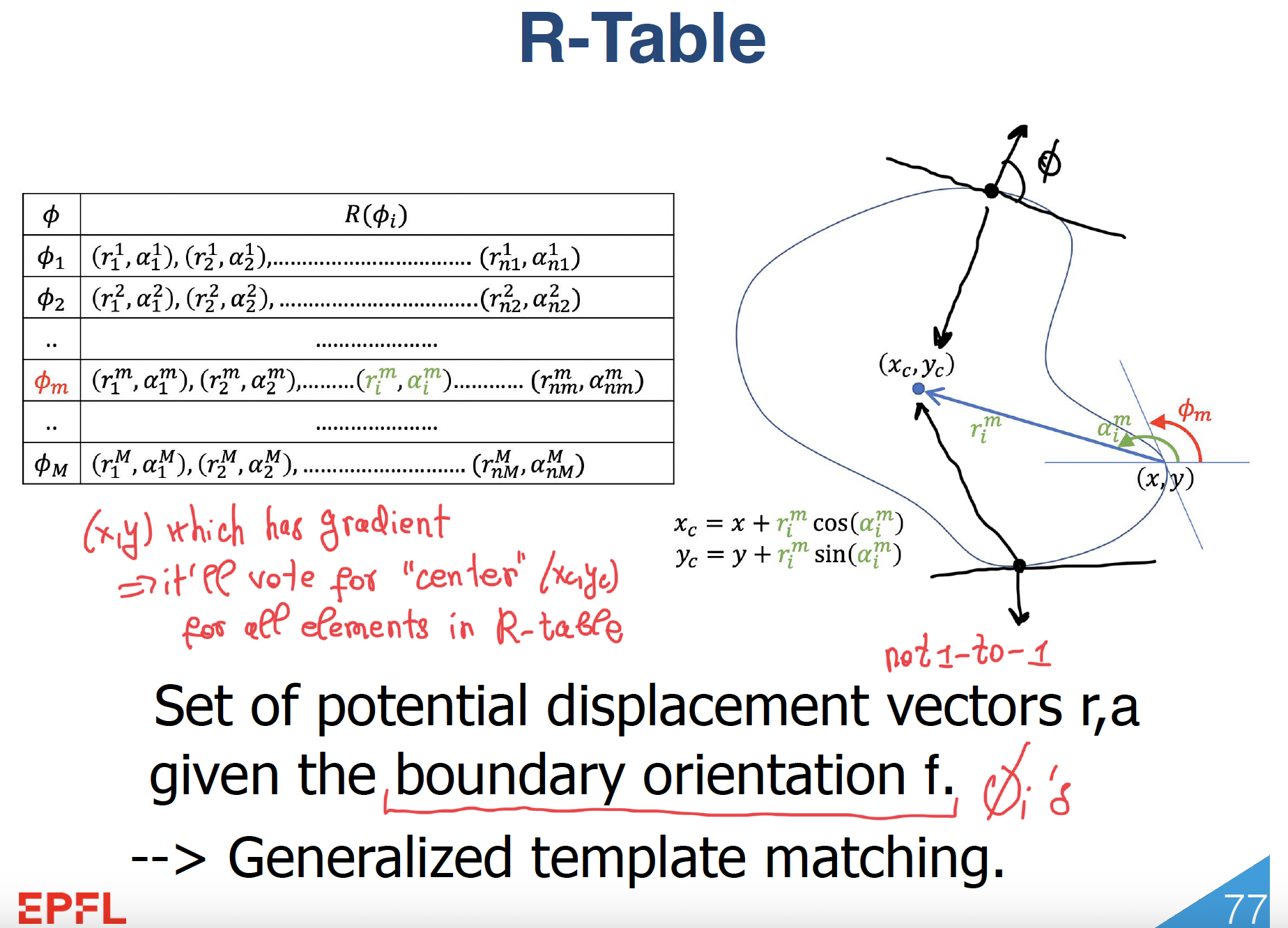I wanted to ask a question about the R-table. I understood how the edge points (x, y) will vote for the reference point (x_c, y_c) where the "center" satisfies the relationship between x, y, r_{i}^m, and \alpha_{i}^m for different \phi values. What I can not understand is what are the other values in each of the given table's rows. Does this mean in order to create an R-table, one has to generate such many (r, a) tuples instead of just having one $\left(r_i^m, \alpha_i^m\right)$ for some $\phi_m$? Also, what does "template matching" mean in this context? Thanks in advance!
